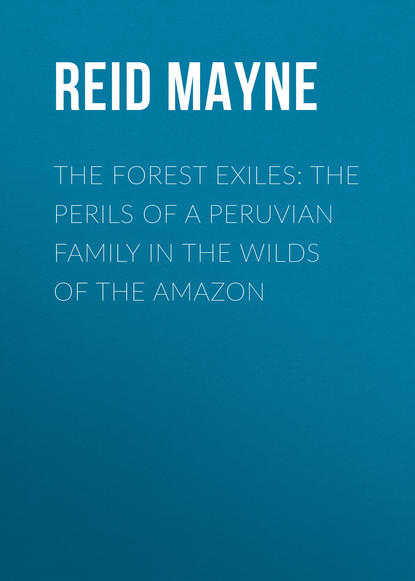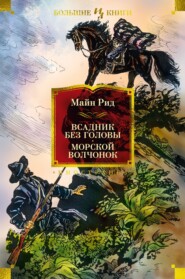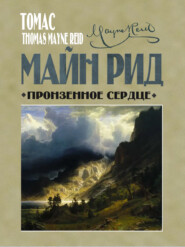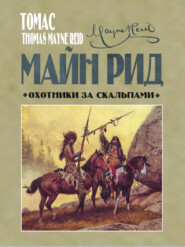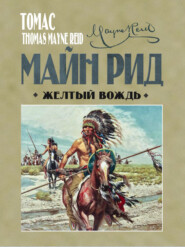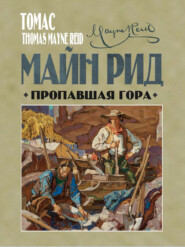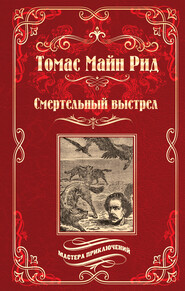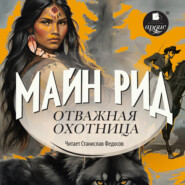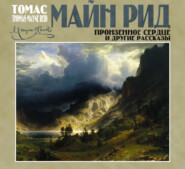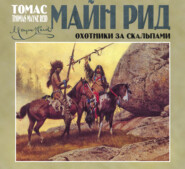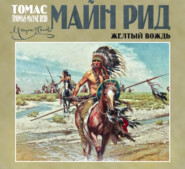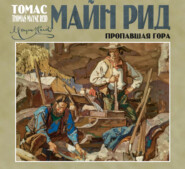По всем вопросам обращайтесь на: info@litportal.ru
(©) 2003-2024.
✖
The Forest Exiles: The Perils of a Peruvian Family in the Wilds of the Amazon
Настройки чтения
Размер шрифта
Высота строк
Поля
Well, it was just a tortoise of this species, a “snapping turtle,” and one of the largest size, that our travellers now saw doing battle with the caiman. The caiman was not one of large size, else the turtle would have fled from it, not that even the largest caimans are feared by the full-grown carapas. No; the strong plate-armour of the latter protects them both from the teeth and tail of this antagonist. The jaguar, with his pliable paws and sharp subtle claws, is to them a more dreaded assailant than the crocodile or caiman.
The one in question was some six or seven feet long, and altogether not much heavier than the turtle itself. It was not for the purpose of eating each other they fought. No – their strife was evidently on other grounds. No doubt the caiman had been attempting to plunder the new-laid eggs of the tortoise, and the latter had detected him in the act. At all events, the struggle must have been going on for some time, for the sand was torn up, and scored, in many places, by the sharp claws of both.
The battle appeared to be still at its height when our party arrived on the spot. Neither tortoise nor caiman paid any attention to their presence, but fought on pertinaciously. The aim of the caiman appeared to be to get the head of the tortoise in his mouth; but whenever he attempted this, the latter suddenly drew his head within the shell, and repeatedly disappointed him. The tortoise, on its part, rose at intervals upon its hind-feet, and making a dash forward, would dart forth its long neck, and clutch at the softer parts of its antagonist’s body just under the throat. Several times it had succeeded in this manoeuvre, and each time it had brought the piece with it, so that the caiman was already somewhat mangled. Another manoeuvre of the tortoise was to seize the tail of its antagonist. Instinct seemed to teach it that this was a vulnerable part, and for the purpose of reaching the tail, it constantly kept crawling and edging round towards it. Now, there is no movement so difficult for a reptile of the crocodile kind as to turn its body on dry land. The peculiar formation of the vertebrae, both of its neck and spine, renders this movement difficult; and in “changing front,” the reptile is forced to describe a full circle with its unwieldy body – in fact to turn “all of a piece.” The tortoise, therefore, had the advantage, and, after several efforts, he at length succeeded in outflanking his antagonist, and getting right round to his rear. He lost no time, but, raising himself to his full height and making a dart forward, seized the tail and held on. He had caught by the very tip, and it was seen that his horny mandibles had taken a proper hold.
Now commenced a somewhat ludicrous scene. The caiman, though but a small one, with the immense muscular power which he possessed in his tail, if not able to detach his antagonist, was able to give him a sound shaking, and the turtle was seen vibrating from side to side, dragged along the sand. He held his broad yellow feet spread out on all sides, so as to preserve his equilibrium, for he well knew that to lose that would be to lose his life. Should he get turned on his back it would be all over with him; but he carefully guarded against such a fatal catastrophe. Of course there were intervals when the caiman became tired, and remained still for a moment; and at each of these intervals the tortoise renewed his hold, and, in fact, as our party now perceived, was slowly, though surely, eating the tail!
When this had continued a short while, the great saurian seemed to despair. The pain, no doubt, caused him to weep “crocodile’s tears,” though none were seen, but his eyes glared with a lurid light, and he began to look around for some means of escape from his painful position. His eyes fell upon the water. That promised something, although he knew full well the turtle was as much at home there as he. At all events, his situation could not be a worse one, and with this, or some such reflection, he made a “dash” for the water. He was but a few feet from it, but it cost him a good deal of pulling and dragging, and clawing the sand, before he could get into it. In fact, the tortoise knew that its position could not be benefited by the change, and would have preferred fighting it out on dry land, and to do this he set his claws as firmly as possible, and pulled the tail in the opposite direction!
The strength of the caiman at length prevailed. He got his body into the water, and, with a few strokes of his webbed feet, jerked the turtle after, and both were now fairly launched. Once in the river, the caiman seemed to gain fresh vigour. His tail vibrated violently and rapidly, throwing the tortoise from side to side until the foam floated around them, and then both suddenly sank to the bottom.
Whether they continued “attached,” or became “separated” there, or whether the turtle killed the lizard, or the lizard the turtle, or “each did kill the other,” no one ever knew, as it is highly probable that no human eye ever saw either of them again.
At all events, no one of our party saw any more of them; and, having watched the surface for some time, they turned in their steps and walked back to the camp.
Chapter Forty Five.
A Pair of valiant Vultures
They had got into a part of the river that seemed to be a favourite resort with turtles and crocodiles, and creatures of that description. At different times they saw turtles of different kinds; among others, the “painted turtle,” a beautiful species that derives its names from the fine colouring of its shell, which appears as if it had been painted in enamel. Of crocodiles, too, they saw three or four distinct species, and not unfrequently, the largest of all, the great black crocodile (Jacare nigra). This was sometimes seen of the enormous length of over twenty feet! Terrible-looking as these crocodiles are, they are not masters of every creature upon the river. There are even birds that can sorely vex them, and compel them to take to the water to save themselves from a fearful calamity – blindness.
One day, while descending the river, our travellers were witness to an illustration of this.
They were passing a wide sand-bank that shelved back from the river, with a scarcely perceptible slope, when they saw, at a distance of about two hundred yards from the water’s edge, a crocodile making for the river. He looked as though he had just awoke from his torpid sleep, for his body was caked all over with dry mud, and he seemed both hungry and thirsty. It was like enough he was coming from some inland pond, where the water had dried up, and he was now on his way to the river.
All at once two dark shadows were seen passing over the white surface of the sand-bank. In the heaven two large birds were wheeling about, crossing each other in their courses, and holding their long necks downwards, as if the crocodile was the object of their regard.
The latter, on seeing them, paused; and lowered his body into a squatted or crouching attitude, as if in the birds he recognised an enemy. And yet what could such a large creature fear from a pair of “king vultures?” for king vultures they were, as was easily seen by their red-orange heads and cream-coloured plumage. What could a crocodile, full ten feet long, fear from these, even had they been eagles, or the great condor himself? No matter; he was evidently frightened at them; and each time that they drew near in their flight, he stopped and flattened his body against the sand, as if that might conceal him. As soon as they flew off again to a more distant point of their aerial circle, he would once more elevate himself on his arms, and make all haste toward the water.
He had got within about an hundred yards of the river, when the birds made a sudden turn in the sky, and swooping down, alighted upon the sand directly before the snout of the crocodile. The latter stopped again, and kept his eyes fixed upon them. They did not leave him long to rest; for one of them, making a few hops towards him, came so close, that it might have been supposed the crocodile could have seized it in his jaws. This, in fact, he attempted to do; but the wary bird threw up its broad wings, and flapped to one side out of his reach. Meanwhile, the other had hopped close up to his opposite shoulder; and while the crocodile was engaged with the first one, this made a dash forward, aiming its great open beak at the eye of the reptile. The crocodile parried the thrust by a sudden turn of his head; but he had scarcely got round, when the second vulture, watching its opportunity, rushed forward at the other eye. It must have succeeded in pecking it, for the great lizard roared out with the pain; and rushing forward a bit, writhed and lashed the sand with his tail.
The vultures paid no attention to these demonstrations, but only kept out of the way of the teeth and claws of their antagonist; and then, when he became still again, both returned to the attack as before. One after the other was seen dashing repeatedly forward – using both legs and wings to effect their object, and each time darting out their great beaks towards the eyes of the reptile. The head of the latter kept continuously moving from side to side; but move where it would, the beaks of the vultures were ready to meet it, and to pierce into the sockets of those deep lurid eyes.
This terrible contest lasted all the time the balza was floating by. It was a slow current at this place, and our travellers were a long time in passing, so that they had a good opportunity of witnessing the strange spectacle. Long after they had glided past, they saw that the conflict continued. They could still perceive the black body of the reptile upon the white sandbank, writhing and struggling, while the flapping wings of the vultures showed that they still kept up their terrible attack. But the head of the crocodile was no longer directed towards the water. At the first onset the reptile had used every effort to retreat in that direction. He knew that his only safety lay in getting into the river, and sinking beyond the reach of his adversaries. At every interval between their assaults, he had been seen to crawl forward, stopping only when compelled to defend himself. Now, however, his head was seen turned from the water; sometimes he lay parallel with the stream; and sometimes he appeared to be heading back for the woods, while his struggles and contortions betrayed the agony he was undergoing. But his turning in this way was easily accounted for. He knew not in what direction lay the river. He could no longer see. His eyes were mutilated by the beaks of the birds. He was blind!
Guapo said the vultures would not leave him until they had made a meal of his eyes, and that was all they wanted. He would then remain on shore, perhaps without finding his way back to the water, and most likely be attacked by jaguars, or other preying creatures, who could conquer him the easier now that he was deprived of his sight!
As the balza glided on, Guapo told our travellers many strange stories of crocodiles. He stated, what is well known to be true, that in the rivers of South America many people are every year killed by these ravenous creatures; in fact, far more than have ever fallen victims to the salt-sea sharks. In some places they are much fiercer than in others; but this may arise from different species being the inhabitants of these different places. There is the true crocodile, with long sharp snout, and large external tusks; and the caiman, with a snout broader and more pike-shaped; and the former is a much more courageous and man-eating creature. Both are often found in the same river; but they do not associate together, but keep in distinct bands or societies; and they are often mistaken for each other. This may account for the difference of opinion that exists in regard to the fierceness of these reptiles – many asserting that they are utterly harmless, and will not attack man under any circumstances; while others, who have witnessed their attacks, of course bearing testimony to the contrary. There are many places in South America, where the natives will fearlessly enter a lake or river known to be full of crocodiles, and drive these creatures aside with a piece of a stick; but there are other districts where nothing will tempt an Indian to swim across a river infested with these reptiles. In the Amazon districts, in every Indian village, several people may be seen who have been maimed by crocodiles. No wonder that among author-travellers there should be such a difference of opinion.
Guapo stated, that when an Indian has been seized by a crocodile in its great jaws, he has only one chance of escape, and that is, by thrusting his fingers into the eyes of the reptile. This will invariably cause it to let go its hold, and generally frighten it, so as to enable the person to escape. It, of course, requires great presence of mind to effect this, as the person who has been seized will himself be in great pain from the tearing teeth of the monster, and, perhaps, will have been drawn under the water, before he can gather his senses. But it has often occurred that Indians, and even women, have escaped in this way.
The eyes of the crocodile are its most tender parts, – in fact, the only parts that can be made to feel pain. A crocodile may be disabled by cutting at the root of its tail, but it can only be frightened by an attack upon the eyes; and this appears to be a well-known fact, not only to the Indians, but to all its other enemies among the birds and quadrupeds.
The young crocodiles are often attacked, and have their eyes pecked out, by the small gallinazo or “zamuro” vultures (aura and cathartes), just in the same way that we have seen one of a larger size become the victim of the more powerful king vultures (Sarcoramphus papa).
Chapter Forty Six.
The “Gapo.”
After many days of rafting our travellers arrived in a most singular country. They were now approaching the mighty Amazon, and the river upon which they had hitherto been travelling appeared to divide into many branches, where it formed deltas with the Amazon. Every day, and sometimes two or three times in the day, they passed places where the river forked, as though each branch passed round an island, but our travellers perceived that these branches did not meet again; and they conjectured that they all fell into the Amazon by separate embouchures. They were often puzzled to know which one to take, as the main river was not always broadest, and they might get into one that was not navigable below. A curious region it was through which they passed; for, in fact, they were now travelling in the country of the “Gapo.”
What is the “Gapo?” you will ask. The “Gapo,” then, is the name given to vast tracts of country upon the Amazon and some of its tributary streams, that are annually inundated, and remain under water for several months in the year. It extends for hundreds of miles along the Amazon itself, and up many of the rivers, its tributaries also, for hundreds of miles.
But the whole country does not become one clear sheet of water, as is the case with floods in other parts of the world. On the contrary, high as is the flood, the tree-tops and their branches rise still higher, and we have in the “Gapo” the extraordinary spectacle of a flooded forest, thousands of square miles in extent!
In this forest the trees do not perish, but retain life and verdure. In fact, the trees of this part are peculiar, most of them differing in kind from the trees of any other region. There are species of palms growing in the “Gapo” that are found nowhere else; and there are animals and birds, too, that remain in this region during the whole season of flood. It has been further asserted that there are tribes of “Gapo” Indians, who live in the middle of the inundation, making their dwellings upon the trees, and who can pass from branch to branch and tree to tree almost as nimbly as monkeys. This may or may not be true. It would not be a new thing, if true, for it is well known that the Guarano Indians, at the mouth of the Orinoco, dwell among the tops of the murichi palms (Mauritia flexuosa) during many months of the season of flood. These people build platforms on the palms, and upon these erect roofs, and sling their hammocks, and, with little fireplaces of mud, are enabled to cook their provisions upon them. But they have canoes, in which they are able to go from place to place, and capture fish, upon which they principally subsist. The murichi palm furnishes them with all the other necessaries of life.
This singular tree is one of the noblest of the palms. It rises to a height of more than one hundred feet, and grows in immense palmares, or palm-woods, often covering the bank of the river for miles. It is one of those called “fan-palms,” – that is, the leaves, instead of being pinnate or feathery, have long naked stalks, at the end of which the leaflets spread out circularly, forming a shape like a fan. One of the murichi leaves is a grand sight. The leaf-stalk, or petiole, is a foot thick where it sprouts from the trunk; and before it reaches the leaflets it is a solid beam of ten or twelve feet long, while the circular fan or leaf itself is nine or ten in diameter! A single leaf of the murichi palm is a full load for a man.
With a score of such leaves, – shining and ever verdant as they are, – at the top of its column-like trunk, what a majestic tree is the murichi palm!
But it is not more beautiful than useful. Its leaves, fruit, and stem, are all put to some use in the domestic economy of the Indians. The leaf-stalk, when dried, is light and elastic, like the quill of a bird – owing to the thin, hard, outer covering and soft internal pith. Out of the outer rind, when split off, the Indian makes baskets and window-blinds. The pithy part is separated into laths, about half an inch thick, with which window-shutters, boxes, bird-cages, partitions, and even entire walls, are constructed. The epidermis of the leaves furnishes the strings for hammocks and all kinds of cordage. From the fruits a favourite beverage is produced, and these fruits are also pleasant eating, somewhat resembling apples. They are in appearance like pine-cones, of a red colour outside and yellow pulp. The trunk itself furnishes a pith or marrow that can be used as sago; and out of the wood the Indian cuts his buoyant canoe! In short, there are tribes of Indians that not only live, in a literal sense, on the murichi palms, but that almost subsist on them.
Although the flood had, to a considerable extent, subsided, the river in most places was still beyond its banks; and this made it difficult for our travellers to find a place for their night-camps. Several nights they were obliged to sleep, as they best could, on the balza, – the latter being secured to a tree. Sometimes, by pushing some distance up the mouth of an “igaripé,” or creek, they were able to find dry ground, on which to encamp. During their passage through this labyrinth of rivers, they travelled but very slowly, and their provisions were fast running out. There was no chance for increasing their stock, as they could not find either wild-hogs (peccaries) or capivaras. These creatures, although they can swim well enough, would only be found upon the banks of the river, when it returned within its proper channel.
Now and then Guapo brought down a parrot, a macaw, or an aracari, with his blow-gun; but these were only temporary supplies. They had often heard howling monkeys in the trees, but had not been able to see them; and none of the party would have refused to eat roast-monkey now, as they had all tried it and found it quite palatable. Guapo, blow-gun in hand, was continually peering up among the tree-tops in search of monkeys or other game. He was, at length, rewarded for his vigilance.
One night they had pushed the balza up an “igaripé” for a hundred yards or so, where a dry bank gave them an opportunity of landing. The creek itself was not much wider than the balza, and tall trees stood upon both banks. In one or two places the thorny “jacitara” palm – which is a sort of climbing plant, often hanging over the branches of other trees – nearly reached across the stream. These curious palms had even to be cautiously pushed to one side as the balza passed, – for the arrowy claws upon them, if once hooked into the clothes of the passengers, would either have dragged the latter from off the raft, or have torn out the piece of cloth.
Chapter Forty Seven.
The Araguatoes
Our party had passed several of these jacitaras, made the balza fast, landed, and were just cooking their scanty supper, when they heard a band of howling monkeys afar off in the woods. There was nothing unusual in this; for these creatures are heard at all times among the forests of the Amazon, especially at sunrise and before sunset, or whenever there is any appearance of the approach of a rain-storm. Our travellers would not have noticed their voices on this occasion, but that they seemed to be approaching in that direction; and as they were coming along the bank of the main river, Guapo concluded that on arriving at the “igaripé,” they would turn up it and pass near where the balza was, and thus he might have them within reach of his gravatána. It was certain they were coming down the river side – of course upon the tree-tops, and would, no doubt, turn up as Guapo expected, for the trees on the opposite side of the igaripé stood too far apart even for monkeys to spring across.
After waiting for half-an-hour or so, the hideous howling of the monkeys could be heard at no great distance, and they were taking the desired route. In fact, in a few minutes after, the troop appeared upon some tall trees that stood on the edge of the creek, not fifty yards from where the balza was moored. They were large animals, of that lanky and slender shape that characterises the prehensile-tailed monkeys; but these were different from the ateles already mentioned. They were true howlers, as they had already proved by the cries they had been uttering for the half-hour past. There are several species of howling monkeys, as we have already stated. Those that had arrived on the igaripé Guapo pronounced to be araguatoes. Their bodies are of a reddish-brown colour on the body and shoulders, lighter underneath, and their naked wrinkled faces are of a bluish black, and with very much of the expression of an old man. Their hair is full and bushy, and gives them some resemblance to a bear, whence their occasional name of “bear-ape,” and also their zoological designation, Simia ursina. The araguato is full three feet without the tail, and that powerful member is much longer. When the band made its appearance on the igaripé, they were seen to come to a halt, all of them gathering into a great tree that stood by the water’s edge. This tree rose higher than the rest, and the most of the monkeys having climbed among the top branches, were visible from the balza. There were about fifty in the troop, and one that seemed larger than any of the others appeared to act as leader. Many of them were females, and there were not a few that had young ones, which they carried upon their backs just as the Indian mothers and those of other savage nations carry their children. Most of the little monkeys lay along the backs of their mothers, clasping them around the neck with their fore-arms, while their hind ones girdled the middle of the body. But it was in their tails the little fellows seemed to place most reliance. The top parts of these were firmly lapped around the thick base of the tails of the old ones, and thus not only secured their seat, but made it quite impossible for them to drop off. No force could have shaken them from this hold, without dragging out their tails or tearing their bodies to pieces. Indeed, it was necessary they should be thus firmly seated, as the exertions of the mothers, – their quick motions and long springing leaps from tree to tree – would otherwise have been impossible.
On reaching the bank of the igaripé, the araguatoes were evidently at fault. Their intention had been to proceed down along the main river, and the creek now interfered. Its water lay directly across their course, and how were they to get over it? Swim it, you may say. Ha! little do you know the dread these creatures have of water. Yes; strange to say, although many species of them pass their lives upon trees that overhang water, or even grow out of it, they are as much afraid of the water beneath them as if it were fire. A cat is not half so dainty about wetting her feet as some monkeys are; and besides a cat can swim, which the monkeys cannot – at best so badly that in a few minutes they would drown. Strange, is it not, that among animals, those that approach nearest to man, like him are not gifted by nature with the power of swimming? It is evident, then, that that is an art left to be discovered by the intellect of man. To fall into the water would be a sad mishap for a monkey, not only on account of the ducking, but of the danger. There is not much likelihood of an araguato falling in. Even though one branch may have broken and failed it, in the great concave sphere which it can so quickly trace around it by means of its five long members, it is sure of finding a second. No; the araguatoes might spend a lifetime in the flooded forest without even wetting a hair farther than what is wetted by the rain.
From their movements, it was evident the igaripé had puzzled them; and a consultation was called among the branches of the tall tree already mentioned. Upon one of the very highest sat the large old fellow who was evidently leader of the band. His harangue was loud and long, accompanied by many gestures of his hands, head, and tail. It was, no doubt, exceedingly eloquent. Similar speeches delivered by other old araguato chiefs, have been compared to the creaking of an ungreased bullock-cart, mingled with the rumbling of the wheels!
Our party thought the comparison a just one. The old chief finished at length. Up to this point not one of the others had said a word. They all sat silent, observing perfect decorum; indeed, much greater than is observed in the great British Parliament or the Congress of America. Occasionally one of the children might utter a slight squeak, or throw out its hand to catch a mosquito; but in such cases a slap from the paw of the mother, or a rough shaking, soon reduced it to quiet. When the chief had ended speaking, however, no debate in either Congress or Parliament could have equalled the noise that then arose. Every araguato seemed to have something to say, and all spoke at the same time. If the speech of the old one was like the creaking of a bullock-cart, the voices of all combined might appropriately be compared to a whole string of these vehicles, with half the quantity of grease and a double allowance of wheels!
Once more the chief, by a sign, commanded silence, and the rest became mute and motionless as before.
This time the speech of the leader appeared to refer to the business in hand – in short, to the crossing of the igaripé. He was seen repeatedly pointing in that direction, as he spoke, and the rest followed his motions with their eyes.
Chapter Forty Eight.
Bridging an Igaripé
The tree upon which the araguatoes were assembled stood near the edge of the water, but there was another still nearer. This was also a tall tree free of branches for a great way up. On the opposite bank of the igaripé was a very similar tree, and the long horizontal branches of the two were separated from each other by a space of about twenty feet. It was with these two trees that the attention of the araguatoes appeared to be occupied; and our travellers could tell by their looks and gestures that they were conversing about, and calculating, the distance between their upper branches. For what purpose? Surely they do not expect to be able to make a crossing between them? No creature without wings could pass from the one to the other! Such were the questions and doubts expressed by Leon, and indeed by all except Guapo, but Guapo had seen araguatoes before, and knew some of their tricks. Guapo, therefore, boldly pronounced that it was their intention to cross the igaripé by these two trees. He was about to explain the manner in which they would accomplish it, when the movement commenced, and rendered his explanation quite unnecessary.
At a commanding cry from the chief, several of the largest and strongest monkeys swung themselves into the tree that stood on the edge of the water. Here, after a moment’s reconnoissance, they were seen to get upon a horizontal limb – one that projected diagonally over the igaripé. There were no limbs immediately underneath it on the same side of the tree; and for this very reason had they selected it. Having advanced until they were near its top, the foremost of the monkeys let himself down upon his tail, and hung head downward. Another slipped down the body of the first, and clutched him around the neck and fore-arms with his strong tail, with his head down also. A third succeeded the second, and a fourth the third, and so on until a string of monkeys dangled from the limb. A motion was now produced by the monkeys striking other branches with their feet, until the long string oscillated back and forwards like the pendulum of a clock. This oscillation was gradually increased, until the monkey at the lower end was swung up among the branches of the tree on the opposite side of the igaripé. After touching them once or twice, he discovered that he was within reach; and the next time when he had reached the highest point of the oscillating curve, he threw out his long thin fore-arms, and firmly clutching the branches, held fast.
The oscillation now ceased. The living chain stretched across the igaripé from tree to tree, and, curving slightly, hung like a suspension-bridge. A loud screaming, and gabbling, and chattering, and howling, proceeded from the band of araguatoes, who, up to this time, had watched the manoeuvres of their comrades in silence – all except the old chief, who occasionally had given directions both with voice and gestures. But the general gabble that succeeded was, no doubt, an expression of the satisfaction of all that the bridge was built.
The troop now proceeded to cross over, one or two old ones going first – perhaps to try the strength of the bridge. Then went the mothers carrying their young on their backs, and after them the rest of the band.





